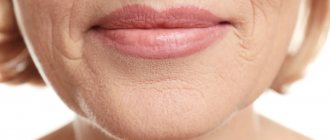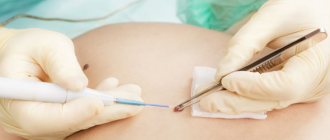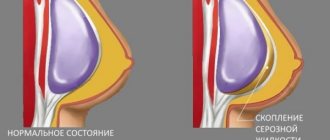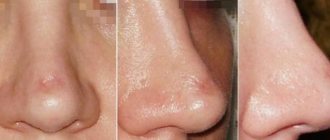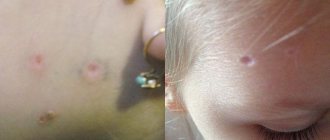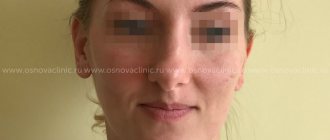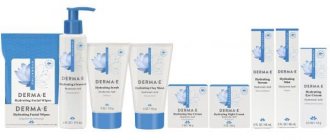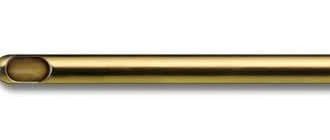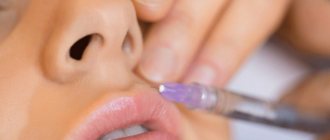Causes of fibrosis
Most fillers are distributed over the problem area (wrinkles, lips - depending on the purpose of injection) gradually, and the effect lasts about a year. At first, after the injection of the substance, clots similar to balls begin to be felt under the skin, which should disappear on their own over time. This filler comes into drops, which is a completely natural process. We talked in more detail about how to get rid of lip filler in our article. If the balls become noticeable or cause discomfort, the cosmetologist will massage them to distribute them more evenly under the skin.
In rare cases, inflammation may occur and resolve within a few days. If such a side effect continues for several weeks, it is worth taking action: consult a cosmetologist, preferably the one who performed this procedure. It is extremely important to do this, since the inflammation may have become chronic and the connective tissues have begun to secrete excess collagen fibers. Tissue compaction occurs, in medical terminology, fibrosis.
Experts in the field of cosmetology classify fibrous tissue deformation as a difficult-to-treat consequence of intervention in the body with fillers.
The most obvious cause of fibrosis is the body's rejection of a foreign substance. In this case, the risk of fibrosis can be reduced by simply choosing the most compatible drug with the human body. Gels based on hyaluronic acid are considered a suitable option: the effect lasts from six months to a year, and synthetic hyaluronic acid is similar in structure to human one. Therefore, there is almost no allergy to such a filler.
But such a drug is suitable for eliminating deep wrinkles, but for increasing the volume of, for example, lips, other means are recommended.
The following factors may be unobvious causes of fibrosis::
- insufficient experience of a cosmetologist;
- infection at the puncture site of the syringe, i.e. failure to comply with hygiene rules;
- mechanical damage to the walls of blood vessels;
- low quality filler or its rough movement;
- incorrect technique for inserting an injection syringe under the skin;
- too high a dose.
To avoid complications after the procedure , and most importantly, difficult-to-treat and unsightly consequences, you should follow several reasonable rules:
- First, make sure you really need to inject filler , or can the problem be solved in other ways?
- Find a trusted cosmetologist with experience, certifications and a cosmetology office. Under no circumstances should you do the procedure at home, even at your best friend’s! Remember that the beauty salon has the necessary tools and carries out disinfection, which is not always possible to do at home. He also bears legal responsibility. With a home “office”, you cannot prove that the procedure was performed by this cosmetologist, and, what is important, with this particular drug.
- Don’t skimp on health and beauty ; sometimes it is three times more expensive to correct the consequences of budget drugs “the same as a well-known brand” than to use well-known quality products.
- You cannot use one syringe for two people ; each person has their own microflora, which can cause inflammation in another user.
- also cannot inject with different fillers : if one procedure is performed with one filler, then the next one must use the same drug.
- The procedure is recommended to be done in the middle of the menstrual cycle.
- On the eve of the procedure, alcohol is contraindicated; a few hours before, strong tonic drinks such as tea and coffee.
- It is better to come to the procedure 30 minutes in advance, relax and calm down. If you are late , you cannot run, as blood microcirculation increases , which can cause hematomas.
- Be sure to inform your cosmetologist about any ailments, colds or other diseases..
Violation of any of these rules can also cause fibrosis. So be careful when choosing a specialist, means and conditions for the procedure.
How is cheekbone contouring done with hyaluronic acid?
At the first consultation, the doctor determines whether it is worth enhancing the cheekbones with fillers. At the same time, he identifies contraindications and talks about what rules must be followed to avoid complications. Next, the drug with the optimal concentration is selected. The specialist also warns that before the procedure it is undesirable to drink alcohol, play sports, or resort to serious cosmetic manipulations.
Correction of cheekbones with hyaluronic acid begins with deep cleansing and antiseptic treatment. Then a local anesthetic is applied, most often in the form of a special cream. After 20 minutes, you can start making injections, having previously treated the injection field again.
In cosmetology, two methods of introducing filler have become widespread:
- regular - with thin needles;
- gentle - with special needles with a blunt cannula.
When using a cannula, it is inserted into a puncture measuring 2-3 mm. Administration through a cannula reduces the likelihood of tissue damage and swelling and promotes uniform delivery of the drug.
The administration technique can be bolus or linear retrograde. In the first case, make as few punctures as possible, increasing the dose of administration. In the second, the filler is administered in microdoses, without limiting the number of punctures. The injections are performed in a given sequence, linearly, hence the name of this technique.
When the manipulations are completed, the doctor gently massages the injection site of the gel to ensure its proper distribution in the soft tissues.
Ways to combat fibrosis
The most “risky” areas for fibrosis to occur are wrinkles on the face, upper nasolabial folds, lower eyelid and, especially, the upper lip. The skin on the lip is very delicate, sensitive to various manipulations to such an extent that swelling can occur from a simple needle prick, without the introduction of any substances.
Is it worth reminding that fibrosis on the face is a very noticeable defect?
It can be disposed of in operative ways, that is, by performing some kind of operation, or non-operatively - without surgical intervention, with the help of cosmetics and medications.
Surgical methods for removing fibrosis
Let's start with operable methods, as the most “scary” for an impressionable patient. When massage and cosmetics no longer help, they turn to a surgeon.
However, this does not mean that the surgeon will certainly cut the fibrosis with a knife, no. Let’s consider different methods from the specialist’s “arsenal”:
- Injections . Otherwise known as hyaluronidase, it is the introduction of a drug into the inflammation site that destroys the filler and removes excess gel. Using the same method, you can replace a filler that has not taken root with another one or remove the gel that compresses the walls of blood vessels. However, such manipulation can provoke tissue necrosis, the death of some cells in a living organism.
- Administration of a steroid hormonal drug . This procedure is done in case of immune system-related rejection of foreign substances.
- Exposure to cold, otherwise cryodestruction . Cauterization with chemicals or electric current. Effective only for superficial, minor inflammations.
- Surgical excision of nodes . Used in severe cases where the fibrosis is too large or the fibrosis lump is too deep in the layers of the epidermis.
- Radio wave and laser therapy . After 5-7 procedures, fibrosis turns into a small cosmetic defect, but the doctor cannot guarantee any result in a particular case. In particularly advanced situations, there may be no effect at all, and the procedures are relatively expensive compared to other methods.
So, only in one of the five listed cases will the surgeon take up the knife. It’s not so scary to be treated surgically. But still, each of them requires a visit to the office of a qualified specialist.
Inoperable
Non-surgical methods include applications of cosmetics or medications, as well as various physiotherapy with them. The purpose of the procedures is to accelerate tissue metabolism and deliver medicinal complexes to the deeper layers of the epidermis.
What treatments can be used against fibrosis:
- Electrophoresis - the effect on inflammation with controlled galvanic current. You can find out what else electrophoresis is needed for here.
- Phonophoresis - exposure to ultrasound. Read about the principles of phonophoresis here.
- Microcurrent treatments to locally break down excess collagen fibers. We described the types of microcurrent therapy in our article.
All three of these procedures can be performed both at home and in a cosmetologist’s office. They differ in the principle of operation, but they have the same main idea: an application with a gel or solution of medicine is applied to the site of inflammation, which is a medium for conducting current (or ultrasound, as is the case with phonophoresis).
Current pulses (or ultrasound) transport particles of the substance into deeper layers of the epidermis than they could reach if they were just an application. This increases the therapeutic effect several times.
Indications for cheekbone correction with fillers
- age-related changes in the zygomatic zone;
- drooping and sagging of soft tissues in the middle part of the face;
- anatomical defects and injuries;
- sunken cheeks, pronounced nasolacrimal groove;
- inharmonious proportions of the oval face;
- excess subcutaneous fat layer in the cheekbone area;
- inexpressive shape of the cheek bones.
With age, changes occur in everyone due to the degradation of bone and subcutaneous fat structures. Unaesthetic nasolabial folds, wrinkles and sagging areas form in the malar area. To restore the youth of the face, it is important to lift the cheekbones and compensate for the lack of volume. The easiest way to perform modeling is with thick consistency preparations. The main advantage of the method of increasing cheekbones with fillers is that with subcutaneous injection it is possible to restore volume and correct nasolabial folds.
How to enlarge cheekbones with fillers
Correction of cheekbones using fillers in our clinic is carried out after consultation with a cosmetologist. Preparation does not take much time, and the procedure itself lasts about 30 minutes. In some cases, it is necessary to take an X-ray of the face in advance so that with its help the doctor can choose the most harmonious shape and volume of the cheekbones.
During the procedure, the specialist cleanses the skin and marks injection points. The next stage is anesthesia. Next, the cosmetologist introduces fillers into certain areas of the cheekbones along the markings and evenly distributes them with massage movements. The last stage is antiseptic treatment of the skin and doctor’s recommendations.
Rehabilitation after correction of cheekbones with fillers
The recovery period is relatively quick and painless. Swelling and redness disappear within 3-7 days after the injections. You can speed up tissue repair by applying troxevasin.
After correction, it is important to follow a number of rules:
- do not touch your face for the first 6 hours;
- give up cosmetics for a day;
- do not massage the injection area;
- the first days sleep only on your back;
- do not visit the gym, solarium, sauna, swimming pool for two weeks;
- Air travel is allowed from 5-6 days.
The procedure is characterized by a natural effect; after contouring with fillers, facial expressions and mobility of the facial muscles are completely preserved.
